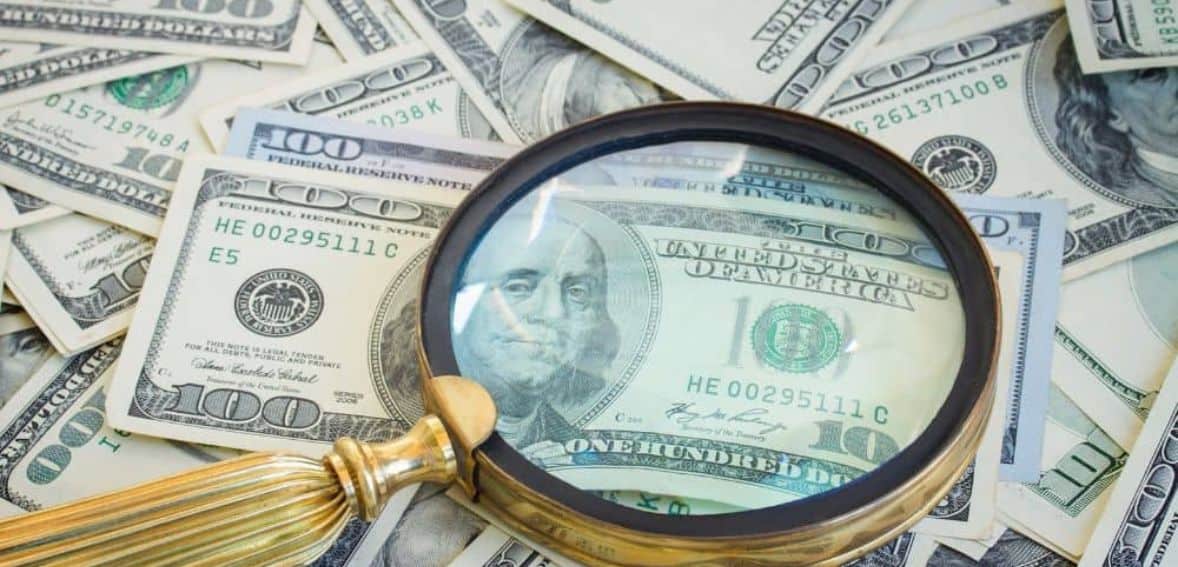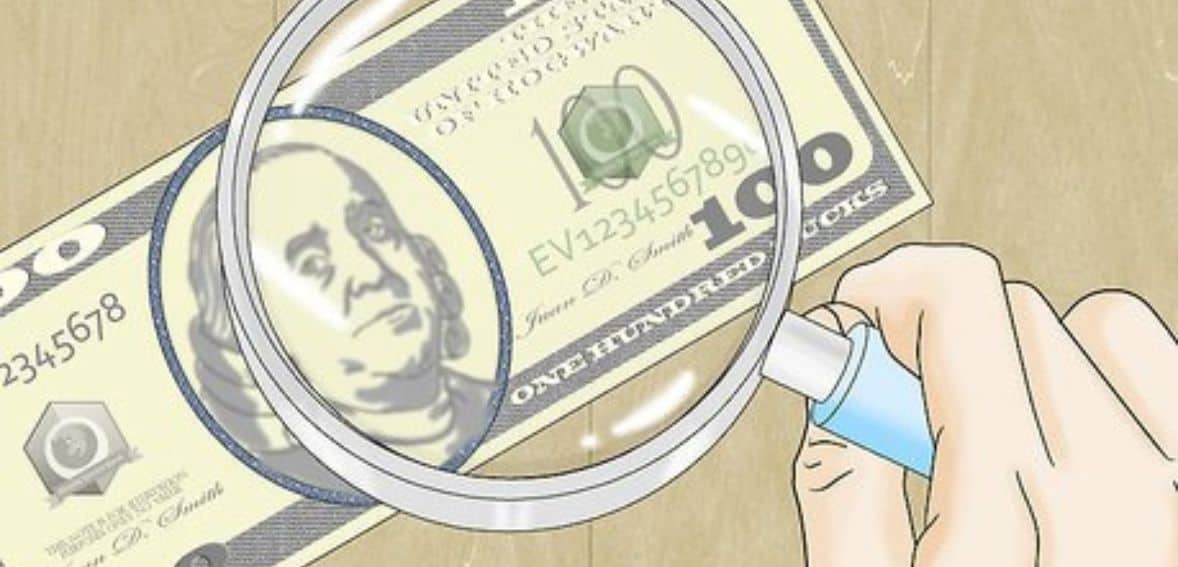
By Karen Henriques March 12, 2025
Running a marijuana dispensary comes with unique challenges, and one of the biggest risks is dealing with counterfeit cash. Since cannabis businesses rely heavily on cash transactions due to banking restrictions, they’re often prime targets for counterfeiters looking to pass off fake bills. Accepting counterfeit money doesn’t just mean financial losses—it can also lead to compliance issues and legal trouble.
That’s why it’s crucial for marijuana retailer and staff to know how to spot fake bills before they make it into your register. From checking for security features like watermarks and raised printing to using tools like UV lights and counterfeit detection pens, there are several ways to protect your business from fraud.
This guide will walk you through the most effective methods for identifying counterfeit currency, training your employees, and responding if you suspect a fake bill. By staying informed and proactive, you can safeguard your dispensary from financial risk and keep fraudulent money out of circulation.
Understanding Counterfeit Currency

Fake money isn’t just a minor inconvenience—it’s a serious issue that can impact businesses, individuals, and the economy. With counterfeiters using more sophisticated techniques than ever, spotting a fake bill isn’t always easy. It’s estimated that millions of dollars in counterfeit currency circulate worldwide, making it crucial to stay informed.
Whether you’re a business owner or just handling cash daily, knowing the security features of real currency—like watermarks, color-shifting ink, and textured printing—can help you identify fakes. Staying vigilant protects you from financial loss and helps keep fraudulent money out of circulation. Awareness is your best defense!
U.S. Currency Security Features
Before you can spot fake money, you need to understand the security features built into genuine U.S. bills. The government includes multiple layers of protection to make counterfeiting difficult. Knowing what to look for can help you quickly verify a bill’s authenticity.
1. Watermark
A real U.S. bill has a hidden watermark that’s visible only when held up to the light. Depending on the denomination, this could be a portrait of the bill’s figure or a simple oval shape. It’s always on the right side of the bill—if it’s missing or in the wrong spot, that’s a red flag.
2. Security Thread
Every modern U.S. bill (except $1 bills) contains a thin embedded security thread running vertically. The exact placement varies by denomination. Shine a light through the bill, and you should see the thread embedded inside the paper, often with tiny printed text indicating the bill’s value.
3. Color-Shifting Ink
Since 1996, U.S. bills have featured color-changing ink on the bottom-right number. Tilt the bill, and the color should shift—typically from green to black or gold to green. If the color stays the same, you might be holding a fake.
4. Raised Printing
Authentic currency has textured printing that gives it a unique feel. Run your fingers over the bill—genuine notes have slightly raised ink, while counterfeits often feel flat and smooth. Try scratching it lightly with your nail to feel the texture.
5. Microprinting
Look closely at the bill, especially near the security thread or portrait—you’ll find tiny, hard-to-read text that says phrases like “USA TEN” on a $10 bill. These details are nearly impossible for counterfeiters to replicate clearly.
Tools to Detect Counterfeit Money

Spotting fake currency by sight and touch is a great first step, but for extra security, businesses and individuals can use specialized tools to confirm a bill’s authenticity. Here are two of the most effective tools for detecting counterfeit money:
1. Counterfeit Detection Pen
A quick and easy way to check a bill is by using a counterfeit detection pen. These pens contain iodine-based ink that reacts with starch, which is found in regular paper but not in authentic U.S. currency (which is made from cotton and linen fibers). When you mark a real bill, the ink stays light or invisible. If it turns dark brown or black, the bill is likely fake.
Limitations: Skilled counterfeiters may use starch-free paper, making their fake bills pass this test. While useful, this tool should be paired with other detection methods.
2. UV Light Detection
A more advanced method is using a UV light scanner, which reveals hidden security features embedded in real U.S. bills. Under UV light, each denomination has a specific glowing security thread that is invisible to the naked eye. For example:
- $20 bill glows green
- $50 bill glows yellow
- $100 bill glows pink
If a bill doesn’t glow at all or shows the wrong color, it’s likely counterfeit.
Marijuana Retailer’s Guide to Spotting Counterfeit Bills

As a cannabis retailer, your business deals primarily in cash transactions due to banking restrictions in the industry. Unfortunately, this also makes dispensaries a prime target for counterfeiters looking to pass off fake bills.
Accepting fake money can lead to financial loss, compliance issues, and even legal trouble. That’s why it’s crucial to train your staff and have a clear process for verifying cash payments.
Here’s a detailed guide to help your dispensary identify fake money before it becomes a problem.
1. Check for Color-Shifting Ink
Legitimate U.S. bills of $5 or higher (printed after 1996) have color-shifting ink on the bottom right corner. This feature makes the bill change color—typically from green to copper—when tilted. Fake bills often use standard ink, so they won’t shift colors when moved under the light.
How to Use This at Your Dispensary:
- Have cashiers tilt every large bill ($20, $50, and $100) before accepting it.
- If the ink does not change color, refuse the bill and alert management.
2. Feel for Raised Printing
Genuine U.S. currency is printed with a special technique that gives it a slightly rough texture. You can feel the raised printing, especially over areas like the portrait and denomination numbers. Counterfeit bills often feel smooth and flat because they are made with digital printers.
How to Use this at Your Dispensary:
- Train employees to run a fingernail across the bill, especially near the shoulder area of the portrait.
- If the texture is flat or waxy, it may be counterfeit.
3. Inspect for Blurry Edges and Text
Authentic bills have incredibly detailed printing, even in microprinted areas. Counterfeit bills often show blurry edges, misaligned printing, or smudged ink, especially around the Federal Reserve Seal and serial numbers.
How to Use this at Your Dispensary:
- Use a magnifying glass at your registers to examine small text, such as the microprinting around the portrait.
- If the printing appears smudged, blurry, or misaligned, reject the bill.
4. Look for Embedded Red and Blue Fibers
Unlike standard paper, genuine U.S. bills contain tiny red and blue fibers woven into the fabric of the bill. These fibers are not printed on; they are embedded in the material itself. Many counterfeiters attempt to replicate this by printing fake fibers on the surface, but they lack depth and are easy to spot under close inspection.
How to Use this at Your Dispensary:
- Hold the bill up to a bright light and inspect for genuine embedded fibers.
- If the fibers appear printed or are missing entirely, the bill is likely fake.
5. Hold It Up to the Light for a Watermark
All genuine U.S. bills ($10 and up) include a watermark that is visible when held up to the light. The watermark should match the portrait on the bill—if it doesn’t, the bill is likely counterfeit.
How to Use this at Your Dispensary:
- Train cashiers to hold large bills up to the light to check for the watermark before accepting them.
- If the watermark is missing, altered, or in the wrong location, reject the bill.
6. Check for the Security Thread
Every U.S. bill ($5 and higher) has a security thread embedded in the paper, running vertically from top to bottom. The thread includes microprinted text matching the bill’s denomination and glows a specific color under UV light:
- $5 bill – Blue
- $10 bill – Orange
- $20 bill – Green
- $50 bill – Yellow
- $100 bill – Pink
How to Use this at Your Dispensary:
- Install a UV counterfeit detection light at checkout stations.
- Have employees scan all $20, $50, and $100 bills under the UV light before completing a transaction.
- If the thread doesn’t glow the correct color, refuse the bill immediately.
7. Examine the 3D Security Ribbon on $100 Bills
Newer $100 bills feature an advanced 3D security ribbon that displays bells and 100s that shift side to side when the bill is tilted. This high-tech feature is extremely difficult to replicate.
How to Use the at Your Dispensary:
If a customer hands over a $100 bill, tilt it back and forth and watch for movement in the ribbon.
If the images don’t move or the ribbon appears printed instead of woven in, it’s likely a fake.
Additional Tools to Protect Your Dispensary

Counterfeit Detection Pens
These pens react to the starch in regular paper and turn dark if the bill is fake.
Warning: Some high-quality counterfeit bills are made with starch-free paper, so use pens alongside other methods.
UV Light Detectors
- Reveals security threads and hidden features that aren’t visible to the naked eye.
- A quick and efficient tool for dispensaries that handle large cash transactions.
What to Do If You Suspect a Counterfeit Bill

If you think you’ve received a fake bill, it’s important to stay calm and handle the situation carefully. Here’s what you should do:
1. Prioritize Your Safety
Your safety comes first. Don’t confront or accuse the person who handed you the bill—just follow standard protocol and notify management or security.
2. Take Note of Important Details
Discreetly observe the person who passed the bill. Try to remember:
- Their physical description (height, clothing, distinguishing features)
- Any companions they may have
- Their vehicle make, model, and license plate (if possible).
3. Contact Authorities
Notify your local police department or reach out to your nearest Secret Service office. They handle counterfeit currency cases and can guide you on the next steps.
4. Handle the Bill with Care
To preserve evidence:
- Do not return the bill to the customer.
- Place it in an envelope, plastic bag, or protective cover to avoid further handling.
- Keep it separate from other money and wait for law enforcement to collect it.
5. Report It Immediately
If advised by authorities, you can also mail the suspected counterfeit bill to your local Secret Service office along with details of the incident.
By staying aware and following these steps, you can help prevent counterfeit money from spreading and protect your business from financial loss.
Conclusion
As a marijuana retailer, your business operates in a cash-heavy environment, making it a prime target for counterfeiters. By educating your staff and implementing these detection methods, you can significantly reduce your risk of accepting fake money.
Make sure your team understands the key security features of genuine bills and uses tools like UV lights and counterfeit detection pens as an extra layer of protection. A little vigilance can go a long way in protecting your dispensary from financial losses and legal complications.
By staying alert, informed, and proactive, you can keep your cannabis business secure and ensure that every dollar you accept is the real deal.